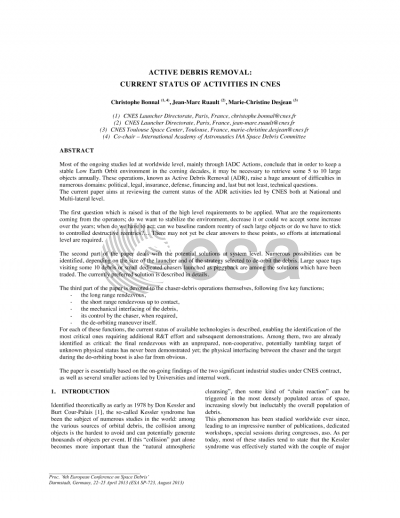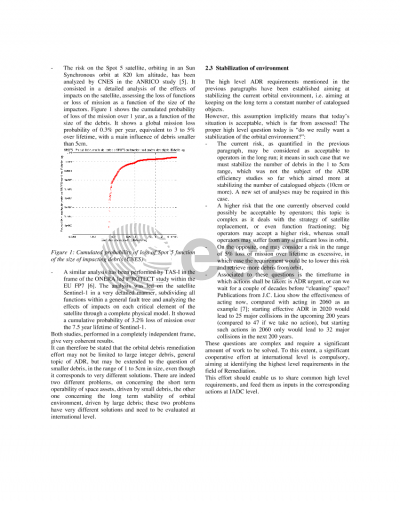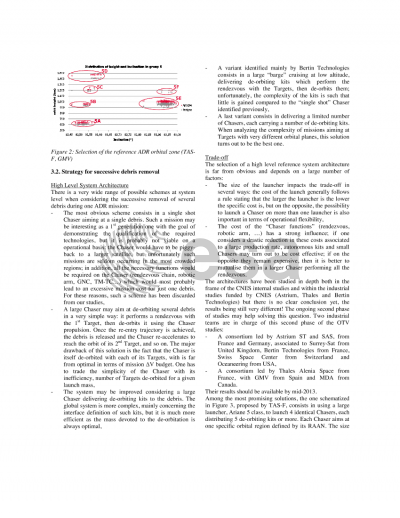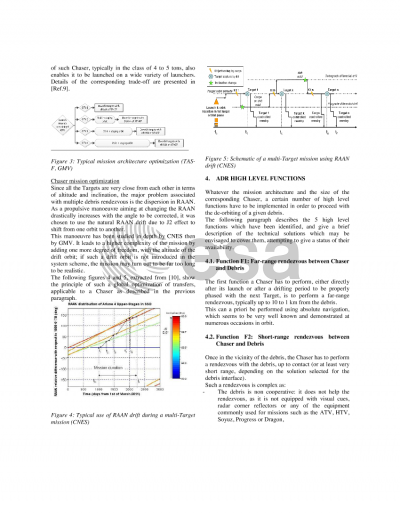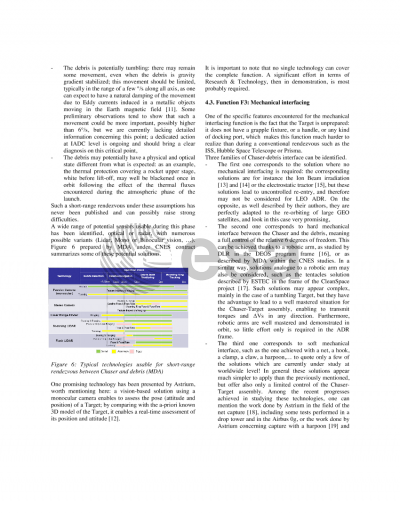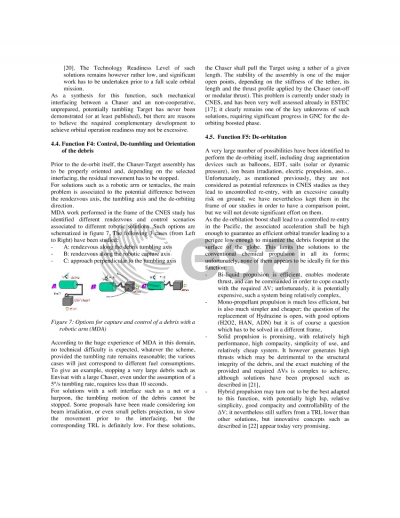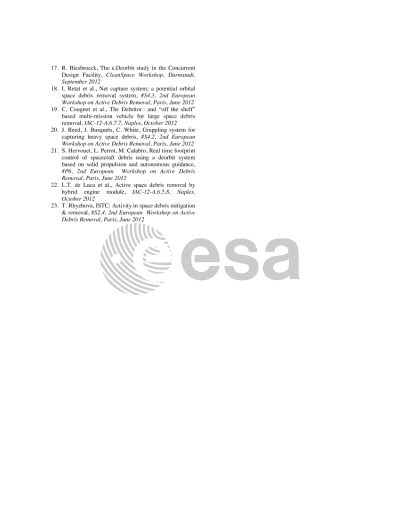Document details

Abstract
Most of the ongoing studies led at worldwide level, mainly through IADC Actions, conclude that in order to keep a stable Low Earth Orbit environment in the coming decades, it may be necessary to retrieve some 5 to 10 large objects annually. These operations, known as Active Debris Removal (ADR), raise a huge amount of difficulties in numerous domains: political, legal, insurance, defense, financing and, last but not least, technical questions. The current paper aims at reviewing the current status of the ADR activities led by CNES both at National and Multi-lateral level. The first question which is raised is that of the high level requirements to be applied. What are the requirements coming from the operators; do we want to stabilize the environment, decrease it or could we accept some increase over the years; when do we have to act; can we baseline random reentry of such large objects or do we have to stick to controlled destructive reentries?... There may not yet be clear answers to these points, so efforts at international level are required. The second part of the paper deals with the potential solutions at system level. Numerous possibilities can be identified, depending on the size of the launcher and of the strategy selected to de-orbit the debris. Large space tugs visiting some 10 debris or small dedicated chasers launched as piggyback are among the solutions which have been traded. The currently preferred solution is described in details. The third part of the paper is devoted to the chaser-debris operations themselves, following five key functions; - the long range rendezvous, - the short range rendezvous up to contact, - the mechanical interfacing of the debris, - its control by the chaser, when required, - the de-orbiting maneuver itself. For each of these functions, the current status of available technologies is described, enabling the identification of the most critical ones requiring additional R&T effort and subsequent demonstrations. Among them, two are already identified as critical: the final rendezvous with an unprepared, non-cooperative, potentially tumbling target of unknown physical status has never been demonstrated yet; the physical interfacing between the chaser and the target during the do-orbiting boost is also far from obvious. The paper is essentially based on the on-going findings of the two significant industrial studies under CNES contract, as well as several smaller actions led by Universities and internal work.
Preview
